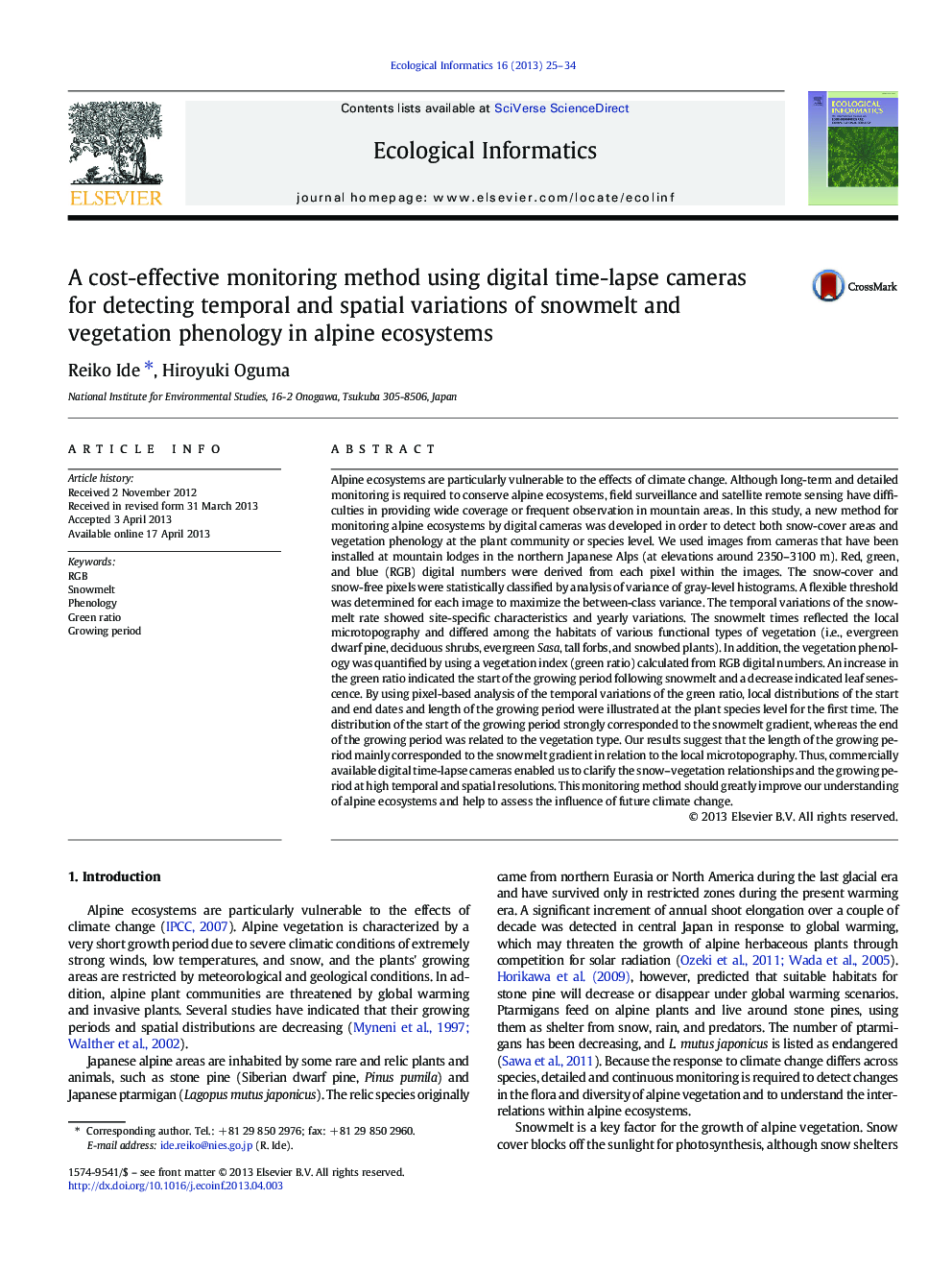| کد مقاله | کد نشریه | سال انتشار | مقاله انگلیسی | نسخه تمام متن |
|---|---|---|---|---|
| 4374978 | 1617216 | 2013 | 10 صفحه PDF | دانلود رایگان |

• Snow-cover pixels in the camera images were detected by analysis of variance.
• Phenology was quantified at the plant community scale by the green ratio index.
• The relationships between snowmelt gradients and vegetation habitats are shown.
• Local distributions of the growing period were illustrated at plant species level.
• The utility of monitoring in alpine ecosystems with digital cameras was demonstrated.
Alpine ecosystems are particularly vulnerable to the effects of climate change. Although long-term and detailed monitoring is required to conserve alpine ecosystems, field surveillance and satellite remote sensing have difficulties in providing wide coverage or frequent observation in mountain areas. In this study, a new method for monitoring alpine ecosystems by digital cameras was developed in order to detect both snow-cover areas and vegetation phenology at the plant community or species level. We used images from cameras that have been installed at mountain lodges in the northern Japanese Alps (at elevations around 2350–3100 m). Red, green, and blue (RGB) digital numbers were derived from each pixel within the images. The snow-cover and snow-free pixels were statistically classified by analysis of variance of gray-level histograms. A flexible threshold was determined for each image to maximize the between-class variance. The temporal variations of the snowmelt rate showed site-specific characteristics and yearly variations. The snowmelt times reflected the local microtopography and differed among the habitats of various functional types of vegetation (i.e., evergreen dwarf pine, deciduous shrubs, evergreen Sasa, tall forbs, and snowbed plants). In addition, the vegetation phenology was quantified by using a vegetation index (green ratio) calculated from RGB digital numbers. An increase in the green ratio indicated the start of the growing period following snowmelt and a decrease indicated leaf senescence. By using pixel-based analysis of the temporal variations of the green ratio, local distributions of the start and end dates and length of the growing period were illustrated at the plant species level for the first time. The distribution of the start of the growing period strongly corresponded to the snowmelt gradient, whereas the end of the growing period was related to the vegetation type. Our results suggest that the length of the growing period mainly corresponded to the snowmelt gradient in relation to the local microtopography. Thus, commercially available digital time-lapse cameras enabled us to clarify the snow–vegetation relationships and the growing period at high temporal and spatial resolutions. This monitoring method should greatly improve our understanding of alpine ecosystems and help to assess the influence of future climate change.
Journal: Ecological Informatics - Volume 16, July 2013, Pages 25–34